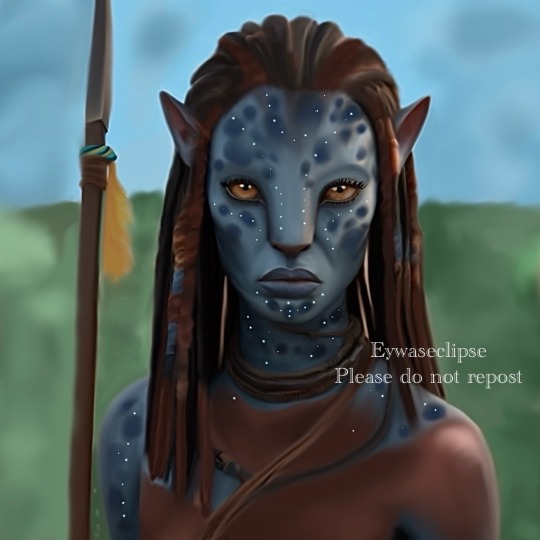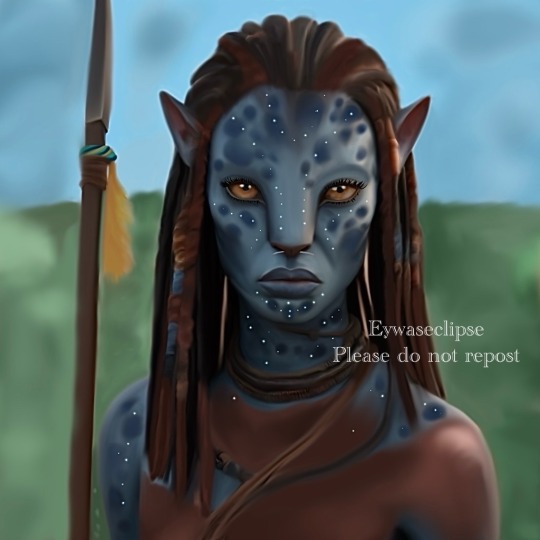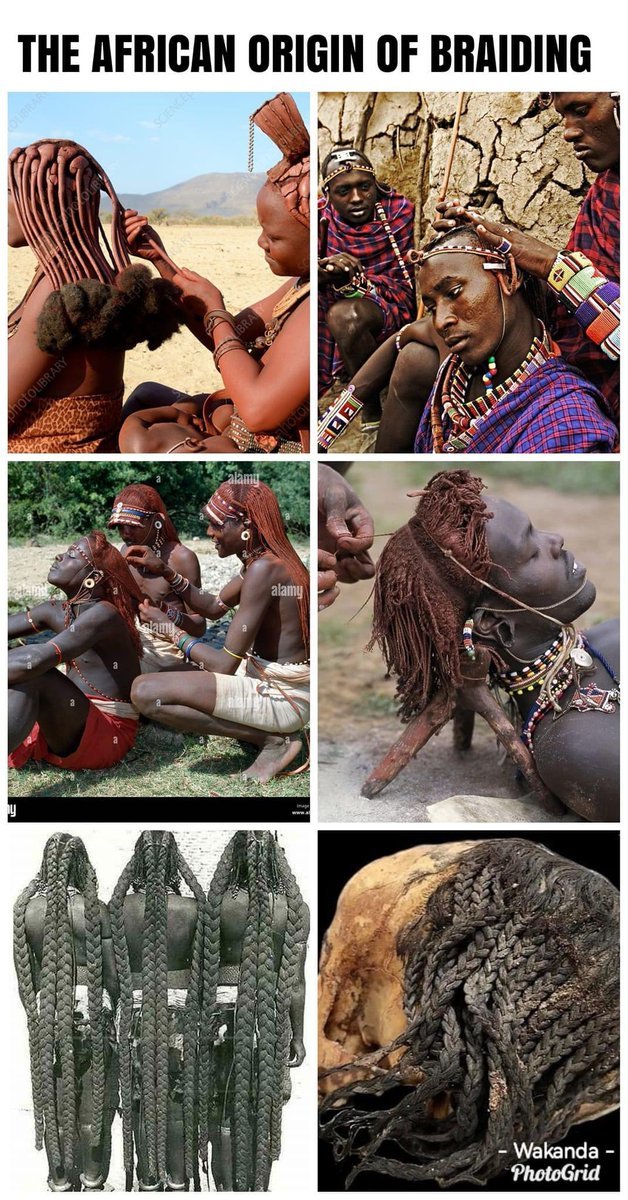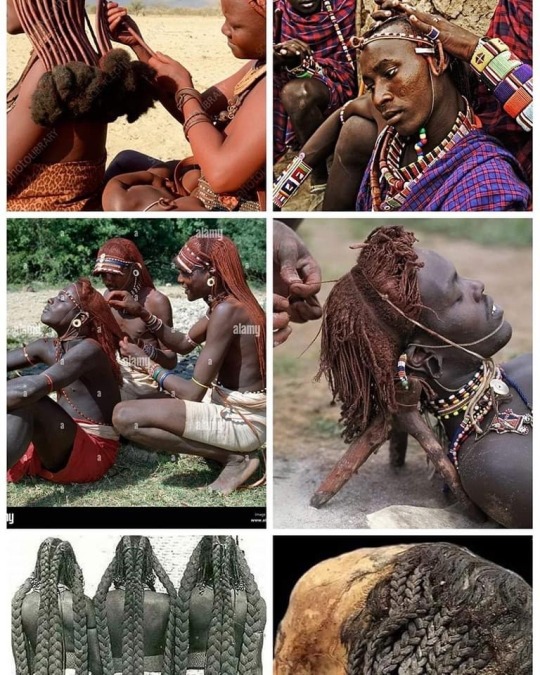#himba women
Photo

Tradition vs modernity - Purros, 2022
#picofthenight#travel#namibia#africa#original photographers#photographers on tumblr#street photography#streetphoto color#street market#generations#himba women
8 notes
·
View notes
Text
youtube
2 notes
·
View notes
Text




My beautiful Savannah Na’vi inspired by the Himba (OvaHimba) tribe of Northern Namibia. I traded the stripes for a more cheetah like pattern.
Himba people, especially women, are famous for covering themselves with otjize paste, a cosmetic mixture of butterfat and ochre pigment. It helps to cleanse the skin and protect it from the hot and dry climate! The style of hair depicts womanhood. Often times the plaits of braids covering face in a veil like fashion will indicate a pubescent status, whereas women who wear an Erembe style show they’re no longer children
#mine#avatar edits#avatar explore page#avatar for you#new avatar blog#avatar fics#avatar 2009#avatar the way of water#new avatar writer#new writer#my art#avatar art#avatar oc#na’vi art#na’vi oc#avatar blog#avatar fyp#Savannah na’vi#Himba tribe#avatar artists#artists of tumblr#art#avatar community#avatar world building#avatar world#atwow#my edits
165 notes
·
View notes
Text
I’m guessing most people aren’t aware of many African ethnic groups, however it’s kinda extremely surprising to me that I’ve never seen a Knuckles the Echidna humanization that made him a member of the Himba people of Namibia, who are most well known for dying their braids and skin with an ochre-pigmented red paste called ojitze, which makes said braids look surprisingly similar to Knuckles’ spikes.




I know that traditionally only the women use ojitze, but I still think it would work incredibly well for a human Knuckles, and I’d adore to see an artist make an Omuhimba interpretation of him
57 notes
·
View notes
Text






Repost from @amplifyafrica
•
📚Let’s take a journey through the evolution of braids, exploring how this timeless art form has grown and transformed over millennia.
🇳🇦3500 BC: The Himba People of Namibia- For the Himba, braids were, and still are, a vital part of their culture. Each braid served as a social emblem, communicating everything from age and status to tribe and wealth. The tradition has been passed down through generations, remaining an integral part of the Himba identity.
🇳🇬x🇲🇱x🇬🇳x🇸🇳x🇳🇪500 AD: The Fulani People of West Africa-The Fulani people, spread across West Africa, are known for their intricate and distinct braid patterns. Traditionally, Fulani women would braid their hair with a central part, creating symmetrical patterns often embellished with beads, shells, and silver jewelry.
🌍 15th Century: The Transatlantic Slave Trade - As African people were forcibly taken to the Americas during the transatlantic slave trade, they carried their cultural practices, including braiding, with them. Some braids were even used as a means of escape—patterns like cornrows were mapped out to resemble paths to freedom.
✊🏽20th Century: The Black Power Movement-Braids made a powerful resurgence in the 1960s and 1970s during the Black Power Movement. Icons like Nina Simone, Angela Davis, and Cicely Tyson wore braids as a statement of pride in their African heritage. The style became a symbol of resistance against European beauty standards, reclaiming and celebrating black identity and culture.
📌21st Century: A Global Phenomenon
Today, braids have transcended their cultural origins, becoming a global phenomenon. From runways to red carpets, braids are celebrated worldwide for their beauty, versatility, and cultural significance. However, it’s essential to acknowledge and respect their deep-rooted history. Braids are not just a fashion statement—they are a connection to a lineage that spans continents and centuries.
#Braids #AfricanCulture #HairHistory #BlackExcellence #CulturalHeritage #BeautyWithMeaning #NaturalHairCommunity
44 notes
·
View notes
Photo

Of all the African tribes still alive today, the Himba tribe is one of the few that counts the birth date of the children not from the day they are born nor conceived but the day the mother decides to have the child.When a Himba woman decides to have a child, she goes off and sits under a tree, by herself, and she listens until she can hear the song of the child who wants to come. And after she's heard the song of this child, she comes back to the man who will be the child's father, and teaches him the song. When they make love to physically conceive the child, they sing the song of the child as a way of inviting the child.When she becomes pregnant, the mother teaches that child's song to the midwives and the old women of the village, so that when the child is born, the old women and the people gather around him/her and sing the child's song to welcome him/her. As the child grows up, the other villagers are taught the child's song. If the child falls, or gets hurt, someone picks him/her up and sings to him/her his/her song. Or maybe when the child does something wonderful, or goes through the rites of puberty, then as a way of honoring this person, the people of the village sing his or her song.In the Himba tribe there is one other occasion when the "child song" is sang to the Himba tribesperson. If a Himba tribesman or tribeswoman commits a crime or something that is against the Himba social norms, the villagers call him or her into the center of the village and the community forms a circle around him/her. Then they sing his/her birth song to him/her.The Himba views correction not as a punishment, but as love and remembrance of identity. For when you recognise your own song, you have no desire or need to do anything that would hurt another. In marriage, the songs are sung, together. And finally, when the Himba tribesman/tribeswoman is lying in his/her bed, ready to die, all the villagers that know his or her song come and sing - for the last time that person's song.
75 notes
·
View notes
Text
I can’t sleep lately so I’ve been jumping from rabbit hole to rabbit hole on Wikipedia. Last night it was otjize, the red clay mixture that Himba women cover their bodies and hair with, which eventually led to uncontacted peoples, focusing in on the Sentinelese who are apparently the most isolated people in the world. They’ve killed people who have attempted to make contact or just came too close to the island through bad luck. It makes sense to me because in the 1880’s a British naval captain abducted 2 adults and 4 children, eventually returning the children. They have probably been passing that story down for generations. I wouldn’t want any visitors either. Then I moved on to the island effect, which causes species in a contained space to tend toward dwarfism or gigantism depending on what benefits them most.
Tonight it’s Elon Musk and lantern flies.
Can’t always be winners I guess.
28 notes
·
View notes
Text

Typical African on Twitter
@Joe__Bassey
THE AFRICAN ORIGIN OF BRAIDING The origin of braids can be traced back 5000 years in African culture to 3500 BC—they were very popular among women. Braiding started in Africa with the Himba people of Namibia. The country’s Mbalantu ethnicity uses eembuvi braids as an initiation into womanhood – our first examples of single braids or “box braids". In Angola, among certain tribes, hair grooming was an activity trusted only by other family members — something that women were taught at a young age and encouraged to participate in throughout their lives to promote womanhood. The origins of the ever-popular Bantu Knots have been traced to the Bantu people who exist across central and Southern Africa. “South Africa’s “Zulu Knots” are said to be the original manifestation of the style, and South Africa is also credited for the invention of “Box braids”, with evidence of the style being traced back to 3500 BCE. Braiding’s roots in East Africa have been traced back to 3500 BC, with cornrows (called Kolese braids in Yoruba) maintaining the top spot in popularity for just as long. Historically, Somali women have been recorded donning long, small braids when approaching puberty. Ethiopia has maintained an admirably close relationship with its traditional forms of braiding. In the Southwestern Omo Valley, the Hamar people have perfected their hairstyles as a means to dictate male worth and female marital status. The importance of braids in communicating identity is a rich part of Uganda’s history, too. In Kenya, the Maasi and Kikuyu tribes have donned their famed matted braids, intricate beading, and gold detailings ever since. West Africa boasts an abundance of hair braiding styles, many of which have influenced global African culture and trends for decades. The Fula people, whose 30 million strong population exists across West Africa, gifted the world with Fulani braids. In Ghana, the iconic Banana or Ghana braids have gained favor for their easy application, upkeep, and excellence in providing protection to natural Black hair. The first examples of this way of braiding are traced back to hieroglyphics and sculptures found around 500 BC. Similarly, Nigeria’s rich history of braiding can be traced back to a clay sculpture dated to 500 BCE depicting a cornrowed member of the Nok tribe. Mali's Dogon people has various spiritual idols depicting cornrowed spiritual leaders, and the retained tradition of The Dama dance have allowed us the privilege of understanding the bewildering society that contributed to our understanding of our universe. In Sierra Leone, Mende people's hair is closely tied to femininity and is juxtaposed with the way forests grow out of the Earth – the vegetation covering Mother Earth grows skyward the way Afro-textured hair grows out of the head. Senegal’s Senegalese Twists or “Rao” as they’re known locally came in vogue as an alternative means of creating individual, long braids – if locs or “box braids” aren’t your style. Gambian warriors were known to march off to war with tightly coiled braids, too. The Mangbetu people of the Democratic Republic of Congo, known for their practice of wrapping their skulls into a cone shape from infancy, locally referred to as “Lipombo, ” the elongated heads were then adorned with braids plaited into a crowned, basket shape called edamburu. Cameroon’s bountiful Fulani community has kept many of their hair traditions well and alive, while the region’s Bantu population participated in the popularity of the now-famed ‘Bantu knots’. In Chad, women of the Basara ethnicity are known for their thick, long, luscious hair – often plaited into waist-long individual braids. In Kemet around 1600 BCE, hair braiding amongst women of royalty, nobility, and concubines was adorned with gold, beads, and perfumed grease, while common folk kept to simpler styles necessary to get work done. #Africa
9 notes
·
View notes
Text




Himba Women 🇳🇦🇦🇴
#african#black beauty#black girl aesthetic#black girl magic#black is beautiful#black woman appreciation#black woman magic#black women#blackgirlmagic#dark skin#dark skin women#black femininity#black women in luxury
28 notes
·
View notes
Text
viking with himba women
13 notes
·
View notes
Text

THE AFRICAN ORIGIN OF BRAIDING
The origin of braids can be traced back 5000 years in African culture to 3500 BC—they were very popular among women. Braiding started in Africa with the Himba people of Namibia. The country’s Mbalantu tribe uses eembuvi braids as an initiation into womanhood – our first examples of single braids or “box braids". In Angola, among certain tribes, hair grooming was an activity trusted only by other family members — something that women were taught at a young age and encouraged to participate in throughout their lives to promote womanhood. The origins of the ever-popular Bantu Knots have been traced to the Bantu people who exist across central and Southern Africa. “South Africa’s “Zulu Knots” are said to be the original manifestation of the style, and South Africa is also credited for the invention of “Box braids”, with evidence of the style being traced back to 3500 BCE. Braiding’s roots in East Africa have been traced back to 3500 BC, with cornrows (called Kolese braids in Yoruba) maintaining the top spot in popularity for just as long. Historically, Somali women have been recorded donning long, small braids when approaching puberty.
Ethiopia has maintained an admirably close relationship with its traditional forms of braiding. In the Southwestern Omo Valley, the Hamar tribe have perfected their hairstyles as a means to dictate male worth and female marital status. The importance of braids in communicating identity is a rich part of Uganda’s history, too. In Kenya, the Maasi and Kikuyu tribes have donned their famed matted braids, intricate beading, and gold detailings ever since. West Africa boasts an abundance of hair braiding styles, many of which have influenced global African culture and trends for decades. The Fula people, whose 30 million strong population exists across West Africa, gifted the world with Fulani braids. In Ghana, the iconic Banana or Ghana braids have gained favor for their easy application, upkeep, and excellence in providing protection to natural Black hair. The first examples of this way of braiding are traced back to hieroglyphics and sculptures found around 500 BC. Similarly, Nigeria’s rich history of braiding can be traced back to a clay sculpture dated to 500 BCE depicting a cornrowed member of the Nok tribe. Mali's Dogon tribe has various spiritual idols depicting cornrowed spiritual leaders, and the retained tradition of The Dama dance have allowed us the privilege of understanding the bewildering society that contributed to our understanding of our universe. In Sierra Leone, Mende people's hair is closely tied to femininity and is juxtaposed with the way forests grow out of the Earth – the vegetation covering Mother Earth grows skyward the way Afro-textured hair grows out of the head.
Senegal’s Senegalese Twists or “Rao” as they’re known locally came in vogue as an alternative means of creating individual, long braids – if locs or “box braids” aren’t your style. Gambian warriors were known to march off to war with tightly coiled braids, too. The Mangbetu people of the Democratic Republic of Congo, known for their practice of wrapping their skulls into a cone shape from infancy, locally referred to as “Lipombo, ” the elongated heads were then adorned with braids plaited into a crowned, basket shape called edamburu. Cameroon’s bountiful Fulani community has kept many of their hair traditions well and alive, while the region’s Bantu population participated in the popularity of the now-famed ‘Bantu knots’.
In Chad, women of the Basara Arab tribe are known for their thick, long, luscious hair – often plaited into waist-long individual braids. In Kemet around 1600 BCE, hair braiding amongst women of royalty, nobility, and concubines was adorned with gold, beads, and perfumed grease, while common folk kept to simpler styles necessary to get work done. Back in the day, braiding hair was considered a special ceremonial practice amongst Sudanese women, even holding the braiding “events” on specific days when female neighbors and friends were invited to partake.
Reference
African Tribes and the Cultural Significance of Braiding Hair". Bright Hub Education. 9 July 2011. Archived from the original on 1 September 2017. Retrieved 1 May 2018.
6 notes
·
View notes
Text
A Ferrari Safari Through Namibia
Walking on the moon (on Earth), risking life along the way.

When presented with the idea of a roadtrip adventure across Namibia, one might think Namiba-what?
Well, let me tell you, Namibia and it’s insanely varied and unique African terrain harbors some of the most awe-inspiring sights I’ve ever seen. From a red moon so full and low to the earth it was almost incomprehensible, to Fish River Canyon and its cratered ravine to the skeleton coast and it’s eerie barrenness, Namibia transports you as far away from the every day as you could travel. Himba tribal women covered in red soil, Sossusvlei’s “Big Daddy” dune reaching high into the clear blue sky … Namibia amazed me at every turn.
3 notes
·
View notes
Photo

THE NUPTIAL MORNING
On the morning of the marriage, female friends apply a mixture of ocher, aromatic herbs, and perfumed butterfat to the Himba bride. A staple Himba cosmetic, this rich mixture provides protection from the sun, as well as beautifying the skin. The married women attending the bride wear the small, leather rosette headdress known as Erembe, which replaces the Ekori headdress after the first month of marriage.
9 notes
·
View notes
Note
Okay so re: the African Ladybug! This one actually seems like some genuine culture stuff! The Himba in Namibia use red clay/mud called otjize on their skin and hair to protect them from the harsh desert. If you look at images of the women, they look almost exactly like Mudekudeku, minus the black spots making the Ladybug pattern.
That said. Though it does have some basis in reality and culture, I think they could do more on how it's presented and go into it a little bit. Maybe we could get an episode about the previous Heroes and their cultures.
Ohhh!!!!! I see!!!! Okay so i was wondering about the thing, good to know about that. Thanks dude
11 notes
·
View notes
Note
not sure if you’re open to receiving these kind of ideas so it’s totally fine to disregard this, but i just saw this tiktok about how women of the himba tribe style their hair and i feel like it could be really gorgeous to see in your art style ❤️
AAAAHHHH why'd you suggest this NOW? When I have a deadline?!?! Now I'm like obsessed with them?! I love this?!?!

I've seen himba women before, but I'm also coming off of a few c-dramas and I've *always* wanted to create something as elaborate, but Black. So...here we go.
And yes I'm def open to ideas/suggestions. I may not have time to execute them, or may choose not to, but I love suggestions of things I may not have seen before, or could be inspired by always. Thank you! :)
2 notes
·
View notes
Photo

Of all the African tribes still alive today, the Himba tribe is one of the few that counts the birth date of the children not from the day they are born nor conceived but the day the mother decides to have the child.When a Himba woman decides to have a child, she goes off and sits under a tree, by herself, and she listens until she can hear the song of the child who wants to come. And after she's heard the song of this child, she comes back to the man who will be the child's father, and teaches him the song. When they make love to physically conceive the child, they sing the song of the child as a way of inviting the child.When she becomes pregnant, the mother teaches that child's song to the midwives and the old women of the village, so that when the child is born, the old women and the people gather around him/her and sing the child's song to welcome him/her. As the child grows up, the other villagers are taught the child's song. If the child falls, or gets hurt, someone picks him/her up and sings to him/her his/her song. Or maybe when the child does something wonderful, or goes through the rites of puberty, then as a way of honoring this person, the people of the village sing his or her song.In the Himba tribe there is one other occasion when the "child song" is sang to the Himba tribesperson. If a Himba tribesman or tribeswoman commits a crime or something that is against the Himba social norms, the villagers call him or her into the center of the village and the community forms a circle around him/her. Then they sing his/her birth song to him/her.The Himba views correction not as a punishment, but as love and remembrance of identity. For when you recognise your own song, you have no desire or need to do anything that would hurt another. In marriage, the songs are sung, together. And finally, when the Himba tribesman/tribeswoman is lying in his/her bed, ready to die, all the villagers that know his or her song come and sing - for the last time that person's song.
10 notes
·
View notes